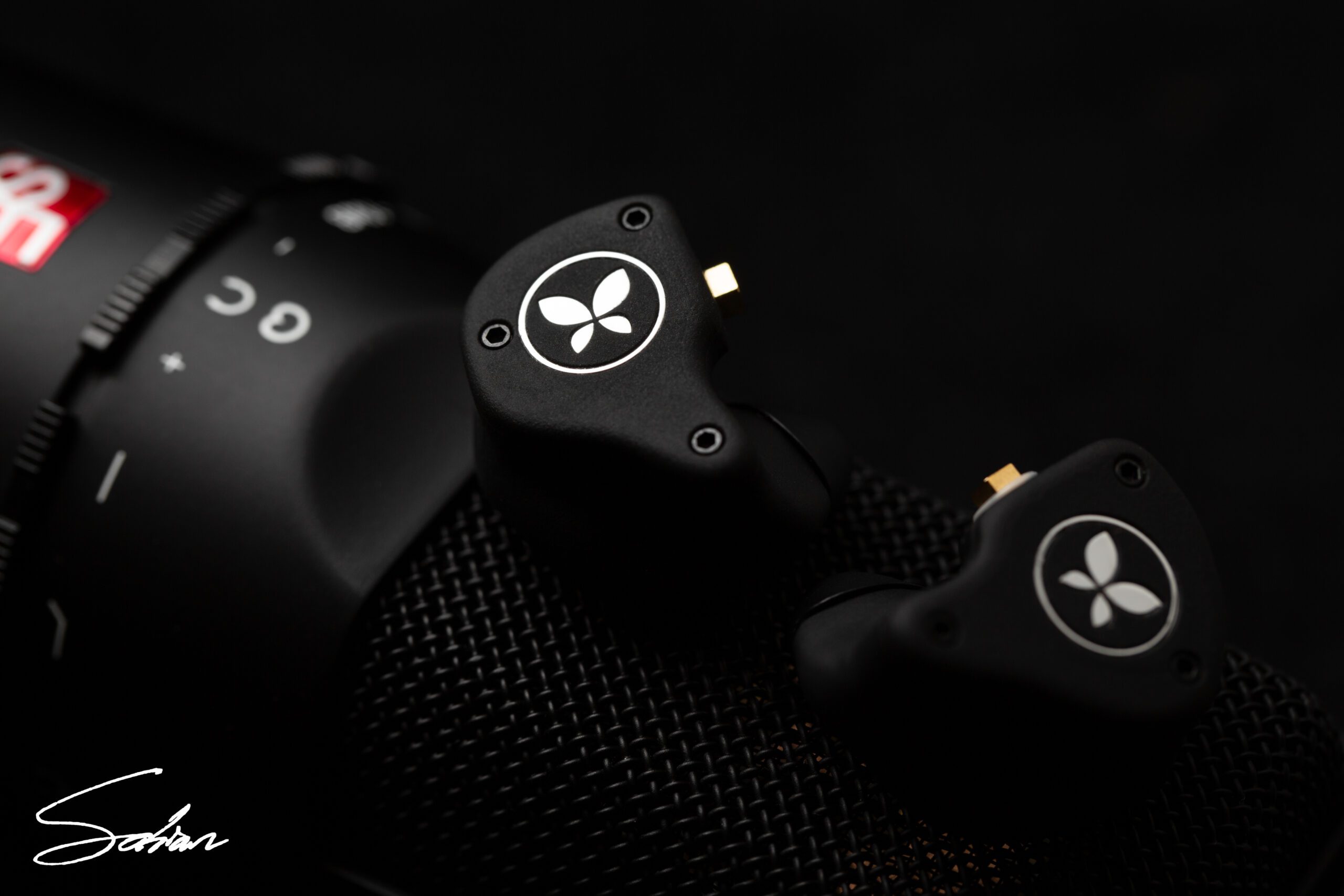DISCLAIMER: FiR Audio and Project Perfection provided me with the M3, M4 and M5 in return for my honest opinion. I am not personally affiliated with these companies in any way, nor do I receive any monetary rewards for a positive evaluation. I’d like to thank FiR Audio and Project Perfection for their kindness and support. The review is as follows.
FiR Audio is an American manufacturer who specialise in all things in-ear monitors. Founded by industry veteran Bogdan Belonozhko in 2018, FiR first earned esteem through their line of accessories, swiftly becoming industry-standard among pros around the globe. And, it wasn’t long after that their own line of IEMs hit the stage at CanJam Singapore 2019. Fitted with tech from tubeless driver arrays, to new connectors and pressure release systems, their M-series of monitors had a debut like no other. Today, after much anticipation, we’re taking a deep dive into FiR’s M3, M4 and M5 in a weekly series, which’ll cover everything from unboxing, to tech and – most crucially of all – performance. This is FiR Audio’s House of M.
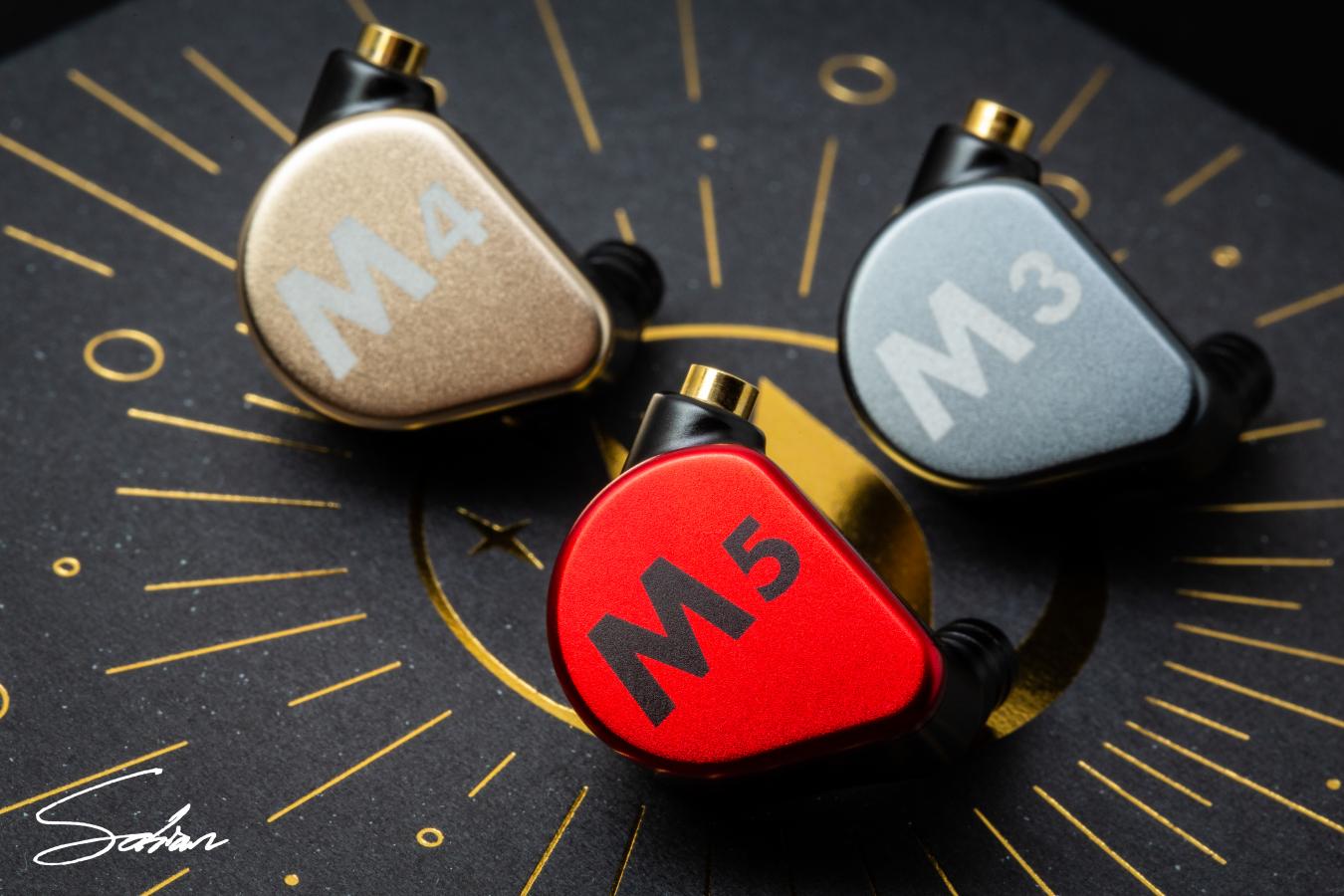
Packaging and Presentation
All three FiR in-ears come in fairly similar packaging, distinguished only by the bottom sticker denoting the product name and its associated logo. The box has a dual-tone scheme with graphite and a dash of gold, and I absolutely love how that aesthetic has been executed. The graphite component has shimmers of glitter, resembling stars in the night sky. And, it’s also a clever callback to the space-themed Cosmonaut campaign FiR ran at their CanJam debut; a keen, purposeful detail.
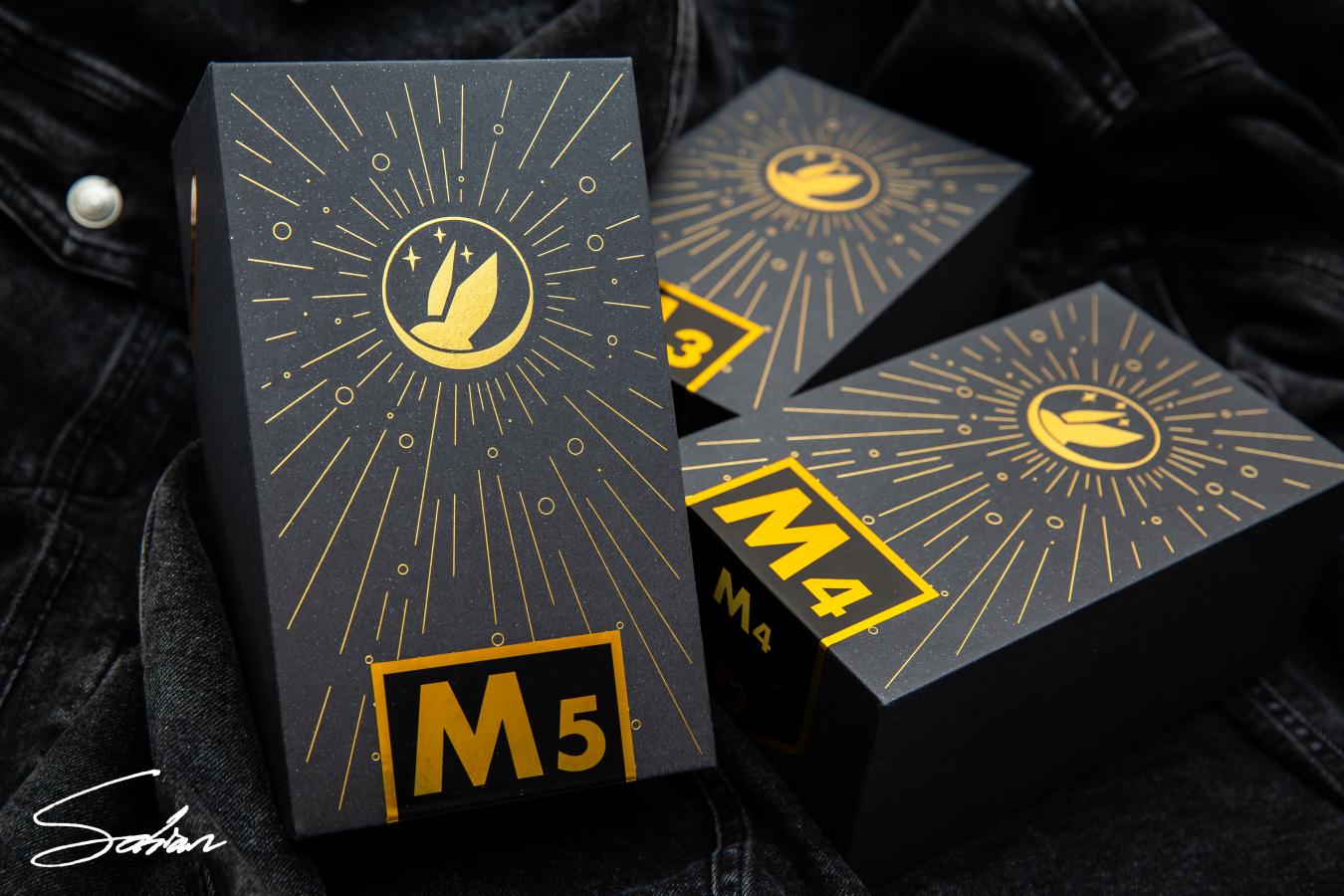
Then, the gold accents – whether engraved, embossed or otherwise – are all done with great definition as well. Lines are crisp-sharp, and the FiR logo in the centre has a subtle, sandblasted texture to it too. All this is topped off with the sticker mentioned above. Again, I love the individuality each model has with their designated colour and emblem. Then, lastly, is a sticker around the back with FiR’s Roots Run Deep motto, complete with a rocket ship to hammer home its space theme. And, as if style alone weren’t enough, there’s even some functionality there with the sticker serving as the package’s seal.
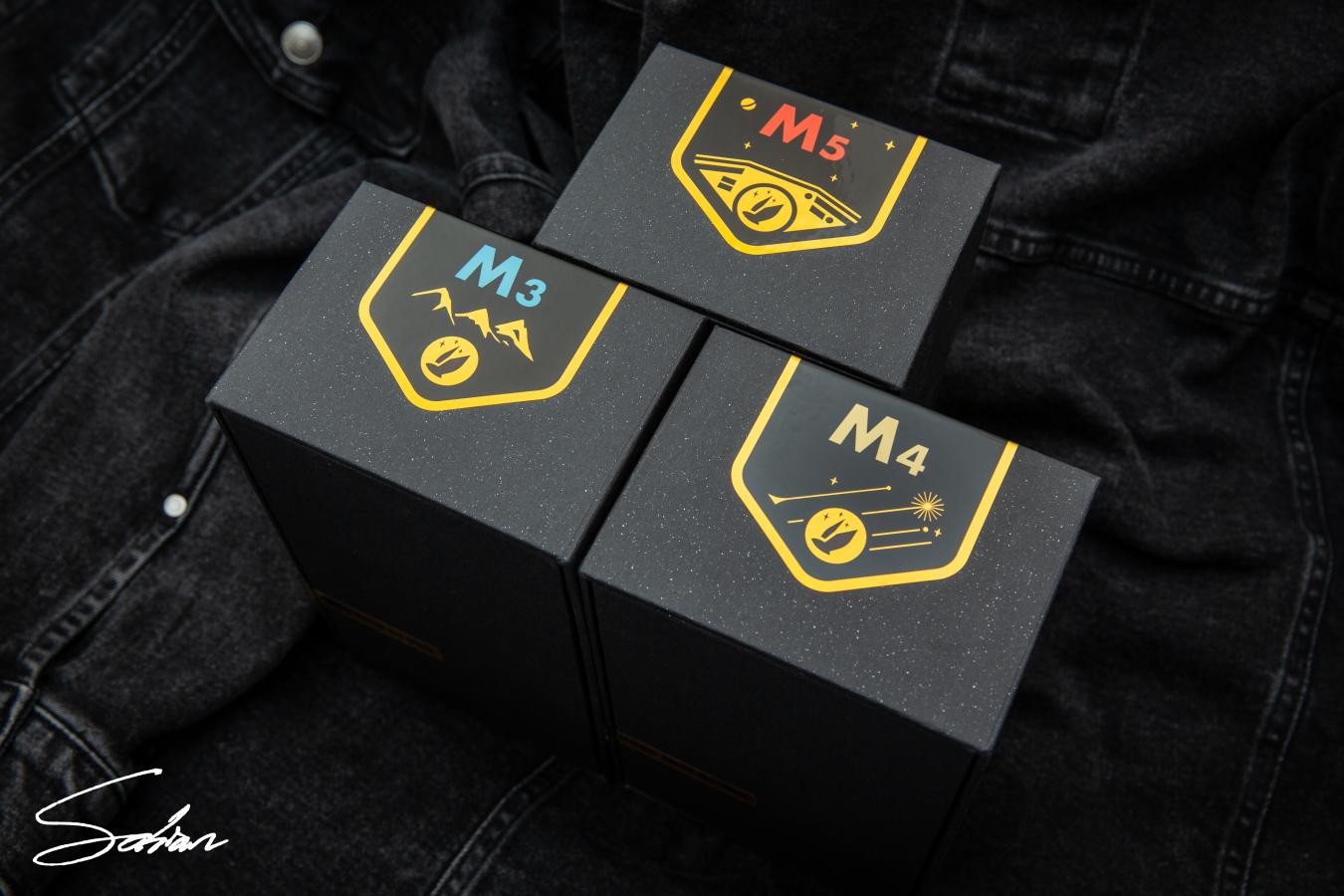
All in all, FiR Audio and Project Perfection have excelled as far as exterior presentation is concerned. From the sleekness of the design, to the myriad of textures and contrasts, as well as the personality between the logos, tagline and graphics, it’s a clever solution that feels expensive without going wild on materials, yet one that’s purposeful and sleek all the while.

Lifting the lid open, you’re met by a greeting card from the FiR Audio team, which – when flipped over – also functions as the user’s guide. It’s a fairly straightforward manual, but one complete with images too. And, I very much admire FiR and Project Perfection’s decision to go that extra mile and print it on textured, tan, cardboard paper, rather than plain, white sheets. It makes the whole unboxing experience, again, feel more premium. And, it also falls in line with the homegrown, handcrafted narrative FiR have been implying, which, again, speaks intent from their marketing to their finished product.

Underneath, you’ll find the in-ears sat in foam, along with an included, playfully-coloured sticker; a nice touch. This foam is actually substantial enough to be lifted whole with the IEMs and cable securely inside, so it could serve as a display of sorts for them too. Then, below that foam are the warranty card and the included leather case. Rather than foam, these two accessories are held in cardboard that’s been cut and folded, which is far less clean-looking to me. Furthermore, the cardboard actually does too good of a job securing the leather case, such that the whole piece could come out – or even tear – as you’re trying to pull the case out. So, although I do get why they’d use cardboard here logistically, I wish FiR had stuck with foam instead for a more consistent unboxing experience, and to give the interior a sleeker, more unified look.
Accessories and Tip Selection
The M3, M4 and M5’s accessories are all stored within their leather cases. And, the cases themselves will vary depending on the model you purchase. The M3 comes with a black case, while the M4 and M5’s are reddish-brown. There’s a subtle difference in the texture of the leather too; the former having slightly larger cells, while the latter has finer, dot-like ones. But, whichever one you get, all three cases are of superb quality; smooth, blemish-free and really robust, solid-feeling as well. The lid opens and closes securely too, so its contents won’t just spill out. However, only time will tell whether or not that grip will hold up after use. Lastly, finishing this case is stellar stitching all-round, and a nicely-lasered FiR logo on top.
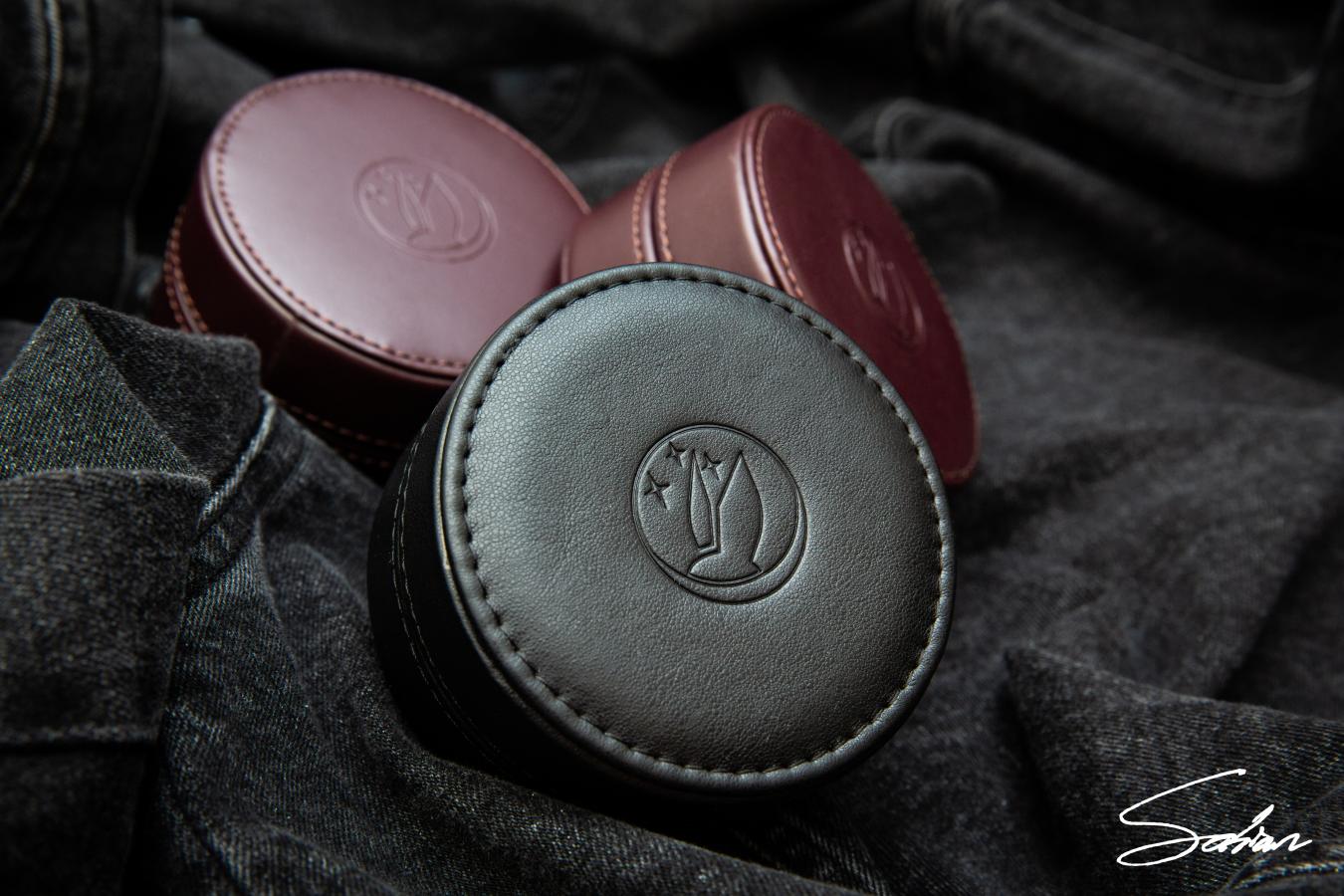
Inside this case, you’ll see five additional pairs of tips (with one already pre-attached on the IEMs), a cleaning tool and an empty space where (I assume) you’d put ATOM modules if you’ve purchased a custom FiR IEM. The tip selection is below:
3 x single-flange silicone tips – small, medium, large
1 x bi-flange silicone tips – large
2 x foam tips – medium, large
Note: All three IEMs have the medium foam tips pre-attached, so I assume this is the config FiR recommend for the intended sig.
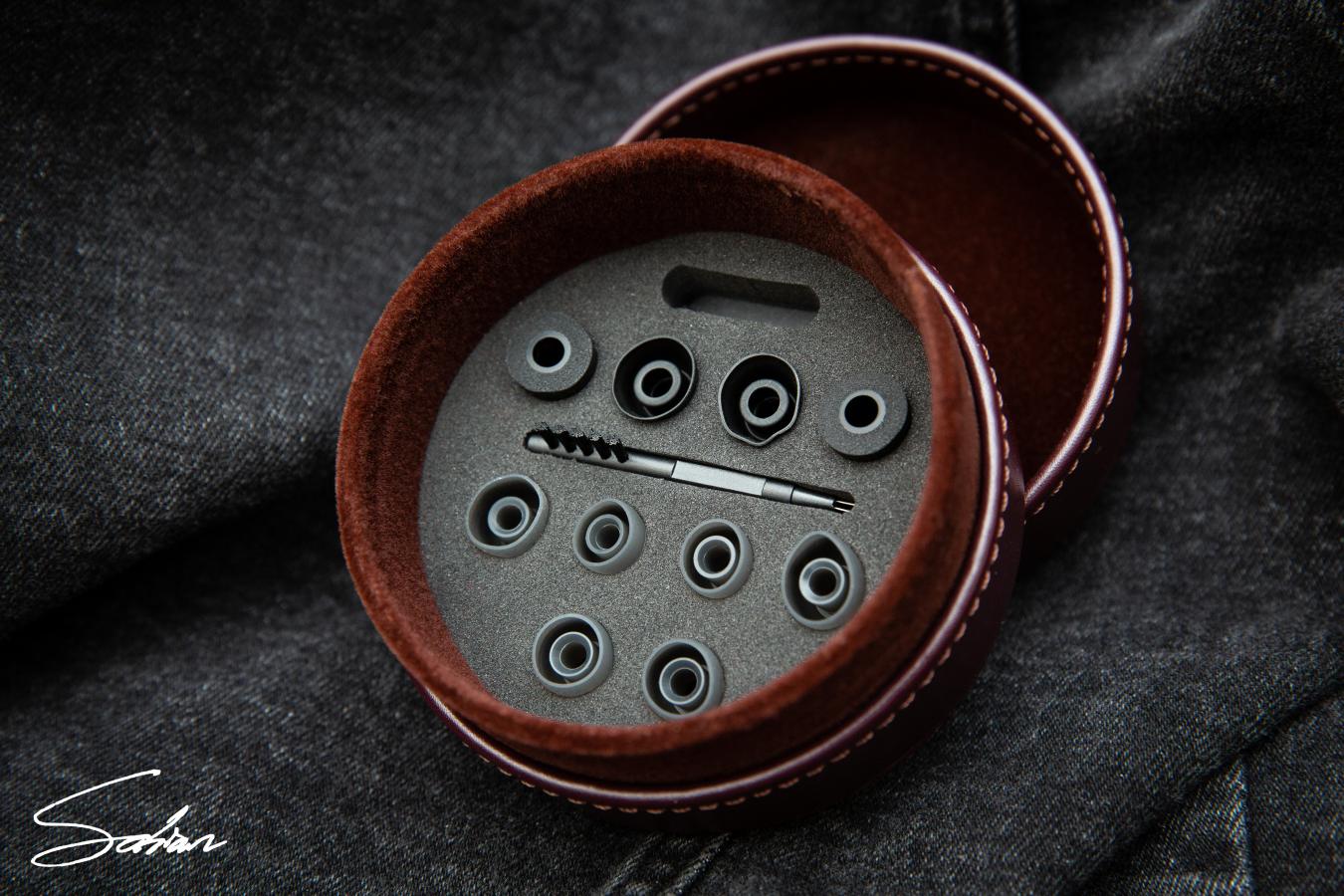
Now, what’s unique about the accessory set is how it’s been laid out inside the leather case. Rather than coming in small, individual baggies, for example, they’re actually all embedded within the case’s foam flooring. To me, this is a very clever solution, especially for that wax tool and (if you purchased a custom) ATOM modules, so you can carry them everywhere you go without having to worry about them rolling around; scratching your in-ears. You’ll have access to all your tips too.
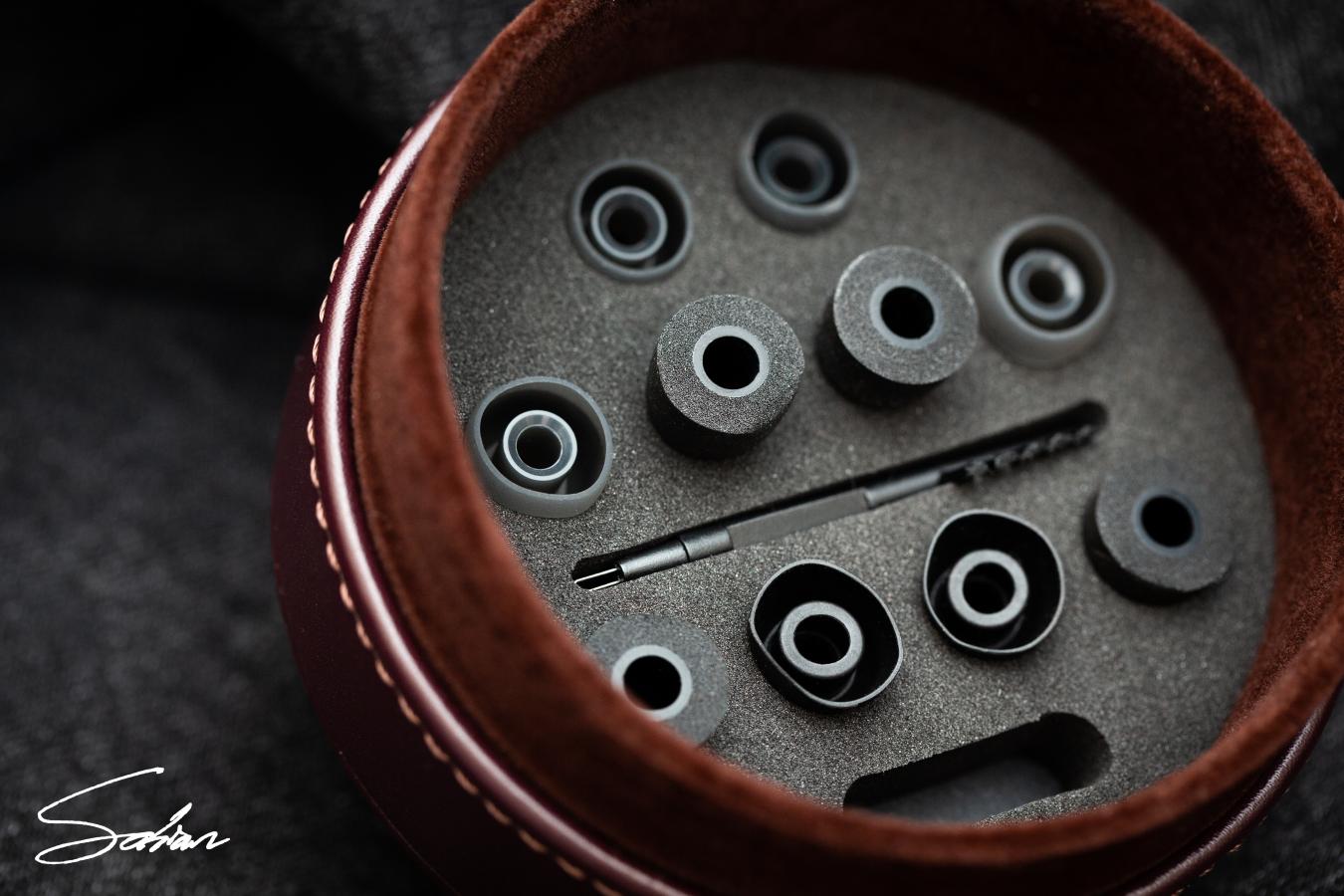
There is, however, a minor flaw to this system. Say you swapped out the default, medium foam tips for the small silicone ones. The former won’t be able to fit into the latter’s slot in the case. So, you’ll either have to jam them in and have them stick out, or leave them out entirely and store them elsewhere. But, this scenario aside, it is, again, a really smart system that allows you to carry all your accessories in a compact, stylish form factor. So, while imperfect, I do applaud the effort.
As a last note to the Accessories section, I must emphasise the complete absence of cable ties and microfibre cloths here. Both, to me, are necessities that are becoming more and more commonplace, even with budget products. So, I’d love for FiR to include them with future releases, and perhaps even brand them with their emblems for some added personality.
Build and Wearing Comfort
FiR Audio have come an incredibly long way since their CanJam debut, and nowhere is that more apparent than their fit and finish. These precision-milled, all-metal shells are a far cry from the 3D-printed demos they once were, and they are – unequivocally – some of the best-made universals I’ve handled yet. The aluminium chassis feels immensely robust, but light at the same time. It’s really reminiscent of the MacBook Pro I’m currently typing on, actually, especially with the fine, anodised finish. And, above all, I absolutely love the chassis’ seamless, near-unibody build. The faceplate and body meet flawlessly, and that runs all the way to the monitors’ solid, ridged nozzle; neither a joint nor a screw in sight. Impeccable.
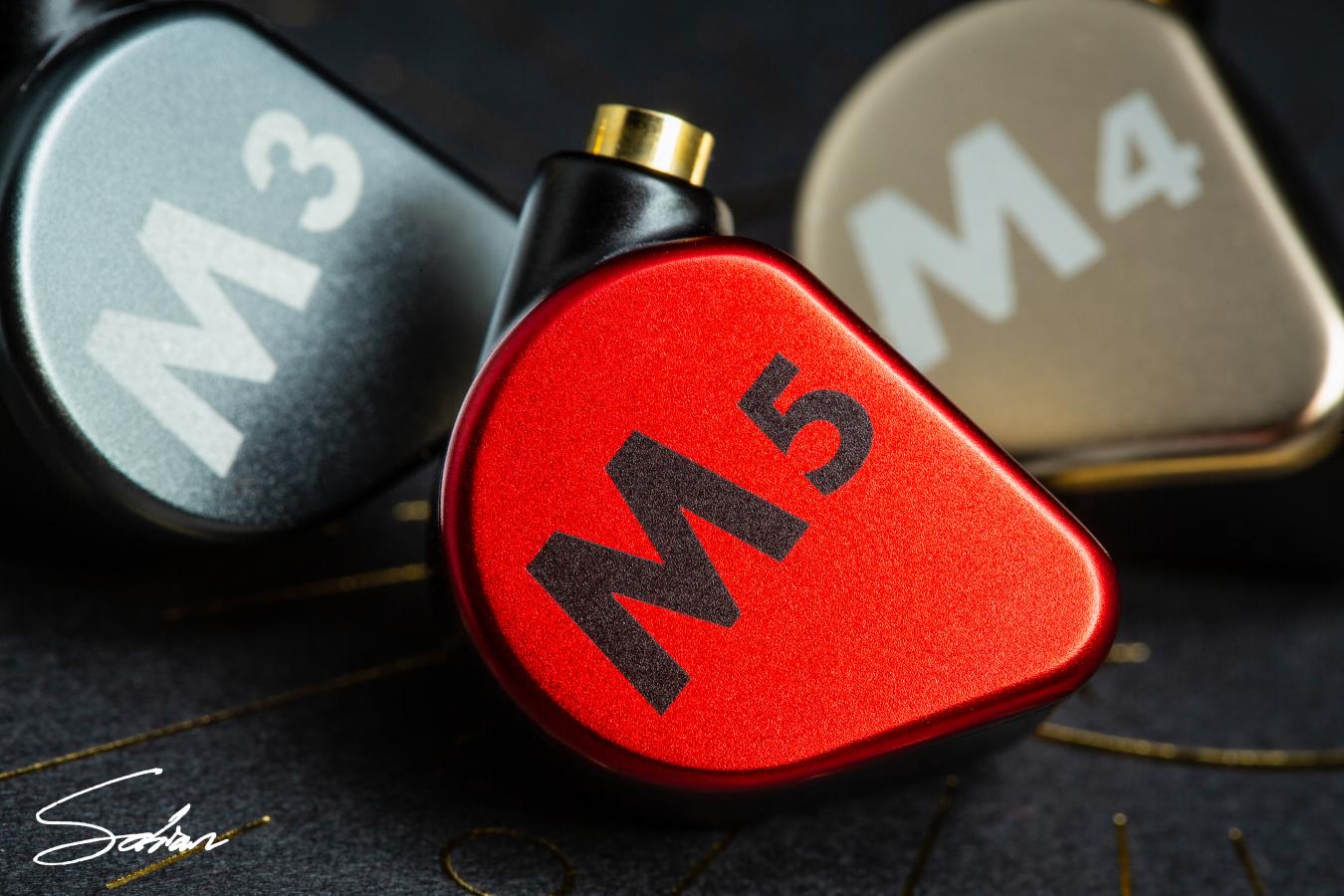
Aesthetically, the shells feature stellar engraving work as well. The logos on the faceplate are as clean and precise as can be, and their super-matte finish contrasts the anodised aluminium really well too. Unfortunately, the serial number and model number engravings on the backs of the shells did not come out as precise, but, given how seldom you’ll see them anyway, it’s a non-issue. In terms of colour, I like how each monitor has its own distinct scheme. My personal favourite is probably the light-gold, champagne of the M4, while the M5’s hotrod-red is a close second. The M3’s bare-grey falls a tad flat for me. I think a shade of aqua or turquoise could’ve had more flair, and it would’ve fit its packaging as well. But, that aside, I do think these in-ears have come out very clean and sleek overall, with a crucial pop from colour and texture too.

Wearing comfort too is a strong point for me. Despite the amount of tech packed within them, I’ve found these in-ears to be impressively compact and lightweight. That teardrop shape is a perfect match for my anti-helix, and the resulting fit is stable, comfortable and secure; whether you’re sitting down stationary or head-banging wildly. With that said, however, I do think extra steps could’ve been taken for an even more snug fit. Similar to in-ears I’ve recently covered from DITA and 64 Audio, FiR have opted to keep the upper-halves of these in-ears flat. While that does boost the universality of the fit, it also means your concha will have nothing to grip onto. A tiny lip there perhaps could’ve made them even more snug and aid isolation too. But, that aside, given their size, weight and shape, I believe most should find them really comfy to wear.
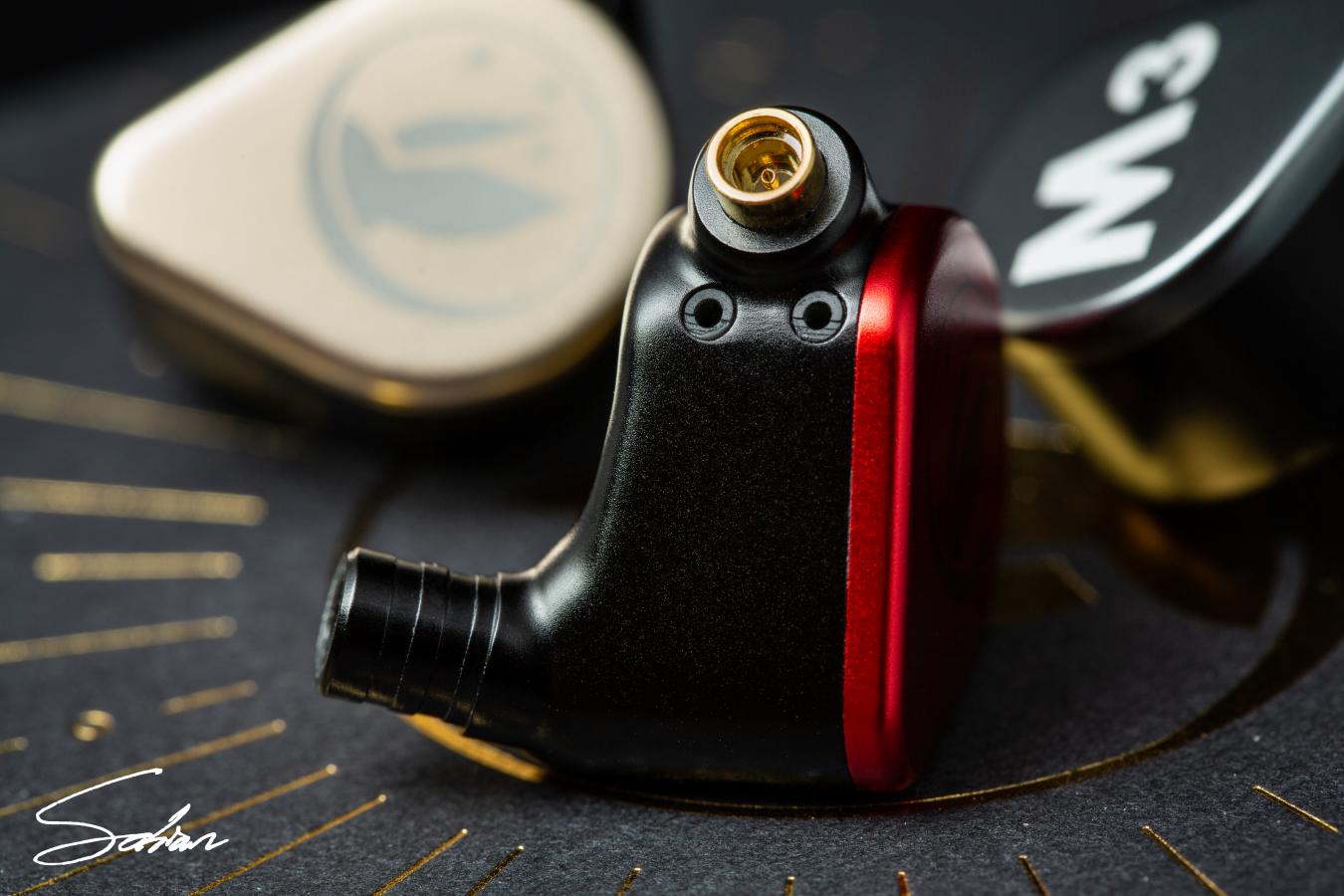
Finally, as you can see from the images, the universal variants of FiR’s M monitors use MMCX sockets. Though their initial plan was to use FiR’s proprietary RCX connectors, they found through community feedback that MMCX was preferred for its ubiquity throughout the industry. So, users won’t have to go through the hassle of re-terminating their existing MMCX cables to use with these IEMs. Having used MMCX connectors from a few different vendors in the past, I’ve found FiR’s to have some of the finest balance between security and detachability. They snap on with a secure, satisfying click and hold the connection firmly. At the same time, detaching them only takes a very moderate amount of force. So, while FiR didn’t get to use RCX here, it ultimately was for the greater good. And, their alternative was well-executed all the same anyway.
Direct Bore Drivers
As mentioned on the intro, all of FiR’s monitors sport entirely tubeless driver arrays, which they claim results in the most natural reproduction of sound. It’s a concept most synonymous with Mr. Belonozhko’s previous company, 64 Audio, and one that he’s brought to his brand-new designs here. An interesting twist Bogdan’s introduced with FiR’s rendition of the tech is the use of a foam-like material packed inside the IEM shell to tune the tubeless drivers. It’s clearly not visible here on their metal-shelled universals, so you’ll have to look for one of their clear-shelled customs to see what that’ll look like.
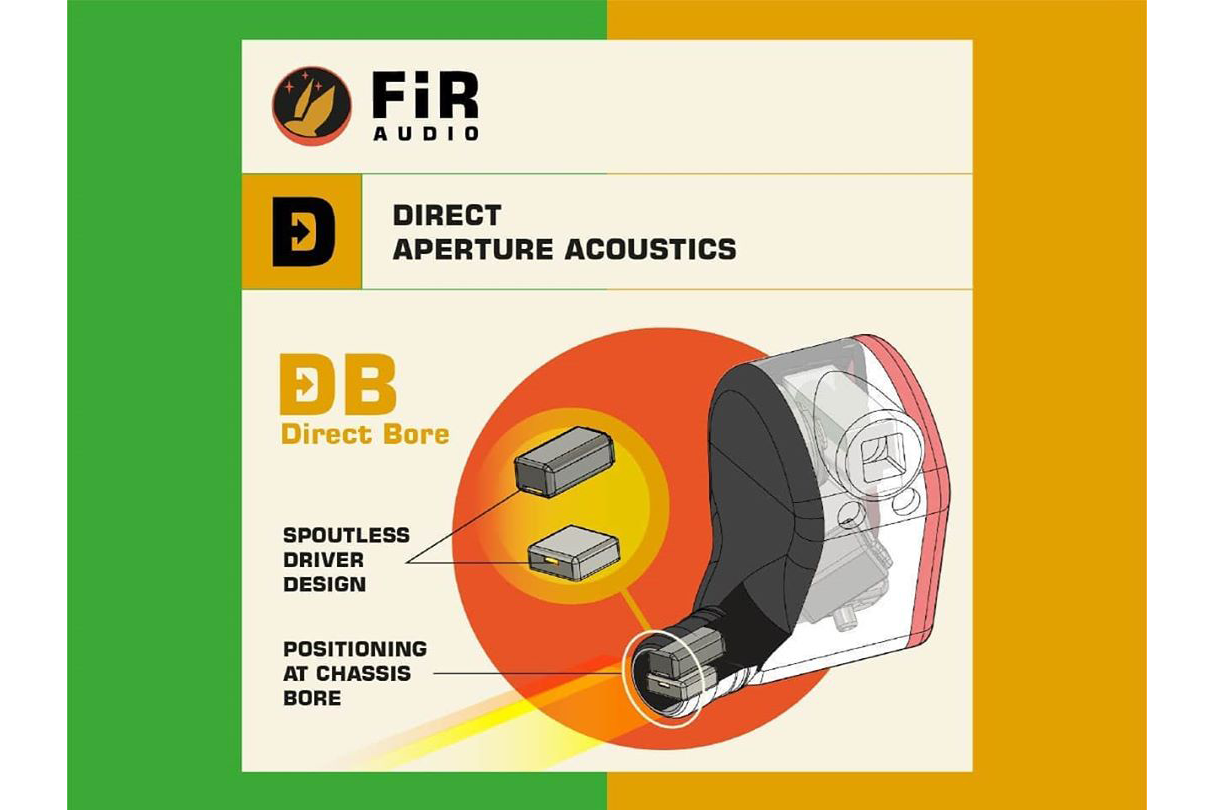
Image courtesy of FiR Audio & Project Perfection
Now, what Direct Bore refers to specifically are the tweeters (or high drivers) FiR have placed on the nozzles of their IEMs. These armatures – which typically fire out of a spout and into a sound tube – have had their spouts removed entirely. By widening the driver’s aperture and allowing more air to pass through them, FiR claim that this removes any harshness or muffling for a “more natural, organic sound.” Both their M3 and M4’s trebles are driven by these spoutless BAs, while the M5 uses both a Direct Bore balanced-armature driver and a Direct Bore electrostat for a total of two tweeters at its nozzle.
Tactile Bass Technology
Tactile Bass is yet another spin on FiR Audio’s tubeless-driver tech; this time applied to their 10mm dynamic driver. Again, it radiates freely into the in-ear’s frame for a more open, natural sound. But, furthermore, what that effectively also does is use the entire monitor’s chassis as a transducer; reverberating it, almost, to create a bass response that is as much felt as it is heard. Teasing the sonic evaluations we’ll get into later on, the effects of this tech are certainly palpable when you hear these in-ears. What I can’t discuss yet, however, is how these effects will alter between the metal-shelled universals and their acrylic, custom counterparts. Hopefully, that’ll be something we’ll be allowed to delve into further in the future.

Image courtesy of FiR Audio & Project Perfection
ATOM Pressure Release System
FiR’s ATOM pressure-relief system is something you may be familiar with if you’ve had any experience with ADEL or apex-equipped IEMs. Like those technologies, what ATOM does is absorb pressure built-up within the ear canal and vent it out to alleviate listening fatigue. FiR also claim their technology aids these in-ears sonically by delivering a wider soundstage. Now, the main difference between ATOM and ADEL or apex is the size of the module. FiR’s ATOM modules are a fraction of the size. And, they’re comprised of different relief methods too. Rather than ADEL’s membranes or apex‘s foam, ATOM utilises surgical-grade tubing to relieve pressure. That tubing’s sub-millimetre diameter is what lets ATOM be as compact as it is. And, if you have the custom M IEMs, you’d also be able to tune the bass by swapping out the modules, since each one has its own, unique internal diameter. The universals have the N (or -15dB) module by default and aren’t swappable.
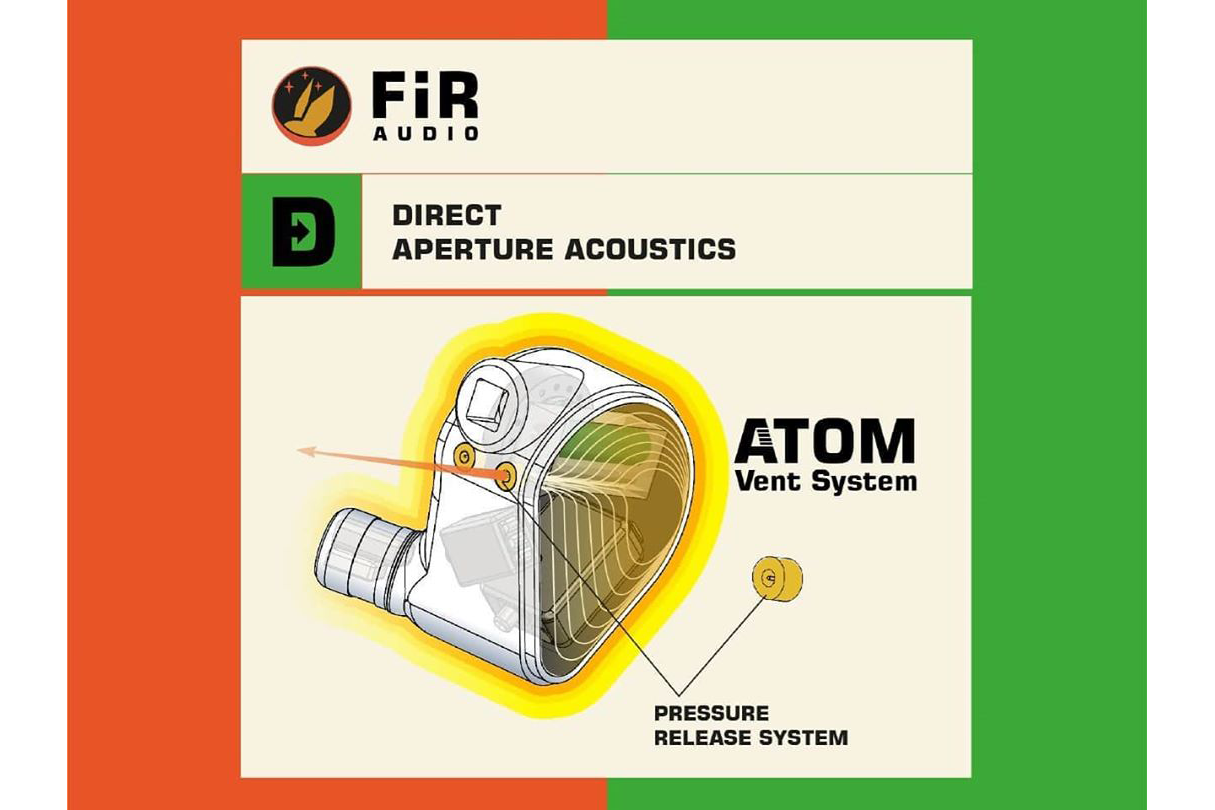
Image courtesy of FiR Audio & Project Perfection
Below, you’ll find links to the individual IEM reviews as they arrive week by week:
FiR Audio M3
FiR Audio M4
FiR Audio M5



